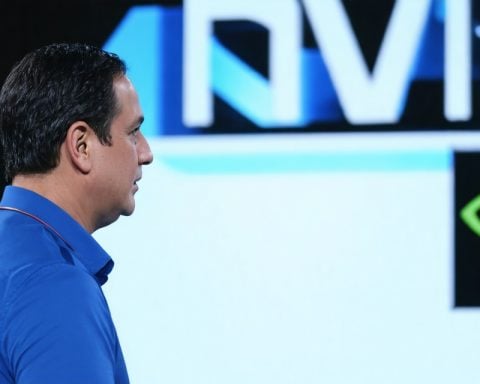- Researchers at Aalto University have developed a groundbreaking method to transition quantum systems between energy states efficiently.
- This new technique advances the 1932 Landau-Zener formula by enabling transitions across multiple energy levels, optimized within superconducting circuits.
- The process utilizes dual Landau-Zener-Stückelberg-Majorana methods to bypass intermediate states, enhancing quantum computing capabilities significantly.
- This innovation offers extraordinary control over quantum systems, mitigating frequency drifts and simplifying hardware complexities.
- The breakthrough paves the way for advanced multilevel quantum architectures, promising greater computational power with improved resource efficiency.
- Such advancements push quantum computing closer to achieving quantum supremacy, marking a significant leap in technology development.
On the cutting edge of quantum mechanics, Aalto University researchers have shattered traditional boundaries by perfecting a technique to leapfrog energy levels in quantum systems. Imagine gliding effortlessly between skyscrapers without touching the ground—this new method allows quantum systems to transition between energy states with breathtaking efficiency, sidestepping constraints that have held the field in check.
In the historical weave of quantum discoveries, the 1932 Landau-Zener formula became a cornerstone, predicting transitions between dual energy levels. Fast forward to today, physicists at Aalto have breathed new life into this principle. They have unveiled a way to manage virtual transitions within systems boasting multiple energy levels, all orchestrated within the precision confines of superconducting circuits reminiscent of those in advanced quantum computers.
Picture this: rather than taking the arduous staircase journey through each level, the researchers devised a metaphorical elevator, propelling quantum systems to a higher state without so much as a pause in between. By dexterously employing dual Landau-Zener-Stückelberg-Majorana processes, they bypassed intermediate states, crafting pathways that supercharge quantum computing capabilities.
This ingenious technique doesn’t merely skate through an arcane loophole; it lays down a highway for new multilevel quantum architectures, offering phenomenal control regardless of frequency drifts. Consider it akin to tuning your radio straight to your favorite station—even among static and distortion.
The implications are tantalizing. Cutting through hardware complexities, this breakthrough promises a quantum realm where devices wring out greater computational power while conserving resources—a step closer to the quantum supremacy dream. As technology architects integrate this discovery, the horizon of quantum computing glows ever brighter.
Unlocking Quantum Systems: Leapfrogging Energy Levels with New Aalto Technique
How-To Steps & Life Hacks in Quantum Systems
Efficient Quantum Transitions: Transitioning quantum systems efficiently between energy levels isn’t just about groundbreaking research—it’s about practical applications that could revolutionize quantum computing. Start by:
1. Understanding Landau-Zener Transitions: Familiarize yourself with the traditional Landau-Zener transition model, as it forms the basis for these new developments.
2. Employing Advanced Superconducting Circuits: Use superconducting circuits to manage virtual transitions effectively. These circuits allow precise control necessary for implementing dual Landau-Zener-Stückelberg-Majorana processes.
3. Leveraging Virtual Transitions: By coordinating these virtual transitions, it’s possible to skip intermediate states, optimizing quantum system performance.
Real-World Use Cases
Quantum Computing: This technique is a game-changer for quantum computing, potentially enabling:
– Faster Computation: By sidestepping traditional constraints, this method allows for quicker computations, crucial for solving complex problems.
– Energy Efficiency: Reducing the computational steps saves energy, which is vital for sustainable quantum computing solutions.
Market Forecasts & Industry Trends
Quantum Computing Market Growth: As techniques like Aalto’s gain traction, experts predict a surge in quantum computing investments. According to MarketWatch, the quantum computing market size is expected to reach $2.2 billion by 2026, driven by advances such as this.
Reviews & Comparisons
Comparative Advantage: Compared to traditional methods, Aalto’s technique provides a streamlined approach that minimizes energy usage and maximizes performance. Competitors might still rely on incremental transitions, making this breakthrough a competitive edge.
Controversies & Limitations
Challenges in Implementation: While promising, Aalto’s technique must overcome several hurdles:
– Complexity of Multilevel Systems: Managing transitions across numerous energy levels in complex systems still poses significant technical challenges.
– Scalability: Scaling this model to handle larger quantum systems remains a topic of ongoing research.
Security & Sustainability
Enhancements in Security: Quantum systems built on this method could offer enhanced security features, ensuring data integrity and reducing vulnerability to quantum attacks.
Sustainability Factor: By optimizing quantum transitions, the environmental footprint of quantum computing operations can be reduced, aligning with global sustainability goals.
Insights & Predictions
Future of Quantum Systems: As research progresses, we anticipate a future where:
– Quantum systems become a staple in fields like cryptography and artificial intelligence.
– Techniques pioneered by Aalto lead to new quantum architectures, offering unprecedented power and efficiency.
Tutorials & Compatibility
Rapid Integration: Those interested in integrating this technique should consider compatibility with existing superconducting circuit infrastructure, ensuring seamless adoption into current quantum computing frameworks.
Pros & Cons Overview
Pros:
– Significantly faster system transitions.
– Greater control over quantum states.
– Reduced energy consumption.
Cons:
– Technical complexity of implementation.
– Current scalability limitations.
Actionable Recommendations
Quick Tips for Quantum Enthusiasts:
– Stay Updated: Keep abreast of developments in quantum computing news and research publications.
– Invest in Education: Learn about superconducting circuits and quantum mechanics to better understand and leverage emerging techniques.
– Network with Peers: Join forums and conferences to discuss potential applications and gain insights from leaders in the field.
For more information about advancements in quantum computing and other technology trends, consider visiting link name.












